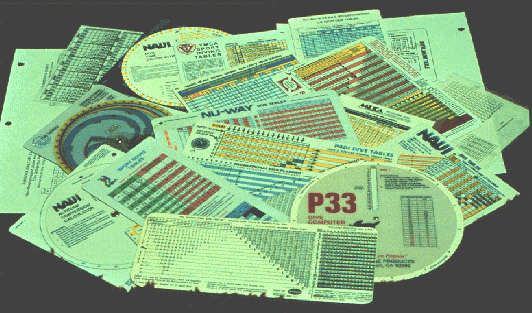
Dive Table Comparison
by
Larry "Harris" Taylor, Ph.D.
This
material is copyrighted and all rights retained by the author. This article is
made available as a service to the diving community by the author and may be
distributed for any non-commercial or Not-For-Profit use.
All rights reserved.
Go To: Home About "Harris" Articles Slides War Stories Editorials Links Fini
There are an abundance of dive tables available to the recreational diver. Each is, of course, the one truly accurate representation of the decompression obligation incurred by each individual diver over all diving scenarios.
Until the 1980's almost everyone diving in the US used the US Navy dive tables (one of the most used, validated tables in existence). Since the tables were promulgated by the US government, training agencies could not copyright the tables and thus, charge a large fee for the tables. In the 1980's, US training agencies created their own tables so that they could be copyrighted and sold for a much higher price (Table prices jumped from a couple of dollars to, in one agency, over $30.00). This was known as the era of "designer tables" as some of these modifications of the US Navy tables apparently had little theoretical or empirical basis for the numbers displayed. This led to a wide variety of dive planning tools. Some justified the need for departing from the US Navy tables by claiming that the US Navy tables had to be modified because of a large number of decompression sickness events. (An unsupported allegation that I examined in FivePercentFailure.)

My
collection of air tables
During this time Karl Huggins
(then at the University of Michigan) offered a Dynamics of Decompression Workshop,*
Participants were asked to work
the following dive scenario for the purpose of comparing time allowed for
no-required stop (No-D) for a number of tables.
The Preliminary Plan:
1. Dive 85 fsw (26 msw) for 20
minutes
2. Stay on surface for 2 hours
and forty minutes
3. Dive 65 fsw (19 msw) for 20
minutes
4. Wait on the surface
5. Dive 53 fsw (16 msw)
Below, for the tables
evaluated, are
1. The specific tables No-D
time limit (in minutes) for a dive to 85
fsw.
2. After waiting 2 hours and 40
minutes, the maximum no-D time (in minutes) allowed by this table to dive a
second dive to 65 fsw.
3. Following a 2 nd dive of 30 minutes to 65 fsw, the time needed to wait on the surface before doing a third dive to 53 fsw for 40 minutes
Workshop Results

Jeppesen (the flight training folks) published several well-respected sport diving texts (circa 1980)
Bassett tables were promulgated by Bruce Bassett (Air Force physiologist / decompression researcher)
Pandora tables were used on the archeological exploration of the wreck Pandora (vessel that hunted Bounty mutineers) on Australia's Great Barrier Reef
Huggins (Hugi Bear) table was promulgated by Karl Huggins (co-developer of the Edge (first legitimate diving computer))
Swiss tables were high altitude tables developed by Albert Buhlmann (Swiss decompression researcher)
DSAT (Diving Science & Technology) tables are marketed by PADI as the Recreational Dive Planner
DCIEM (Canada's Defense & Civil Institute of Environmental Medicine) tables were developed specifically for cold water
BSAC (British Sub Aqua Club) tables for recreational diving
So, the "correct" time to spend on the surface prior to that third dive varies between 24 minutes and 16 hours. It all depends upon on your choice of dive table/profile planner!
Irrespective of what any table or computer may indicate, it is your body chemistry on the day you dive and your diving profile that determines decompression obligation / status.
The longer and deeper you dive, the more gas you absorb and the greater your decompression obligation.
The longer your surface interval, the greater your level of off-gassing.
Bottom line:
Dive tables, like religions, are chosen on faith. So, choose wisely!
*Karl Huggins, The Dynamics of Decompression Workbook, University of Michigan, Ann Arbor, MI, 1992, 177 pages.
Go To: Home About "Harris" Articles Slides War Stories Editorials Links Fini
About
The Author:
Larry
"Harris" Taylor, Ph.D. is a biochemist and Diving Safety Coordinator
at the University of Michigan. He has authored more than 200 scuba related
articles. His personal dive library (See Alert Diver, Mar/Apr, 1997, p. 54) is
considered one of the best recreational sources of information In North America.
All rights reserved.
Use of these articles for personal or organizational profit is specifically denied.
These articles may be used for not-for-profit diving education